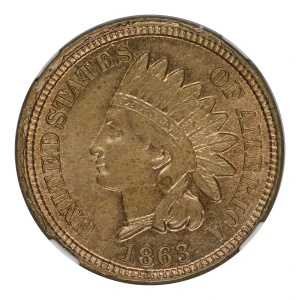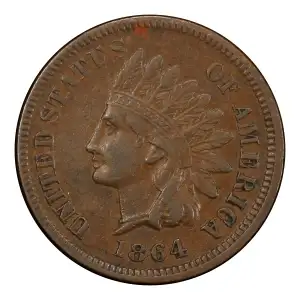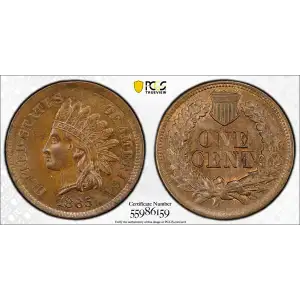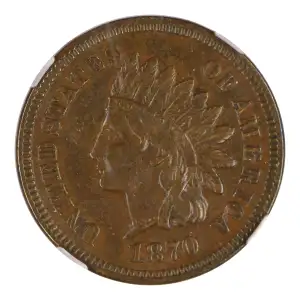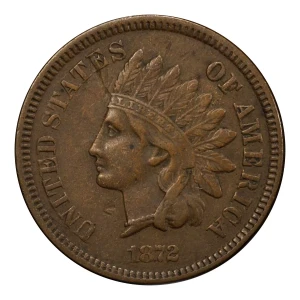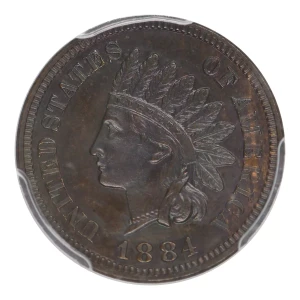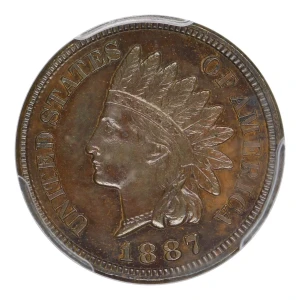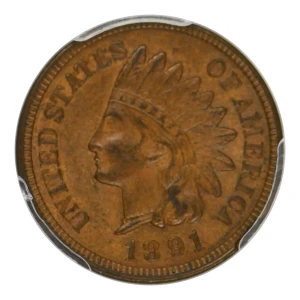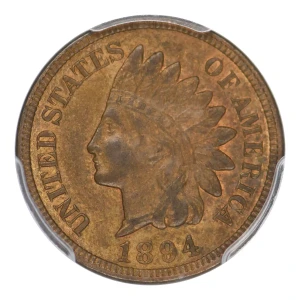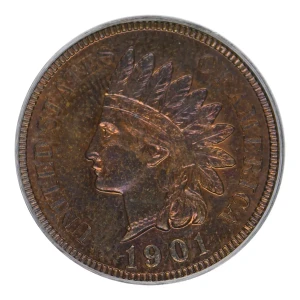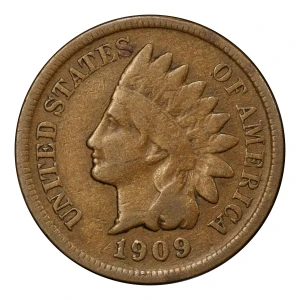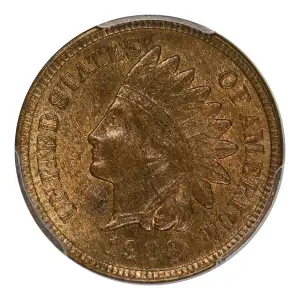In the first half of the 18th century, one cent coins were large, clunky copper pieces nearly the size of a modern half dollar. By 1856, the cost of producing these copper coins rose so high that the U.S. mint was forced to significantly reduce the size of the one cent coin. On May 25th, 1857 the mint debuted a new small diameter cent, the Flying Eagle cent, which was the same size as our modern-day Lincoln cent. However, due to difficulties in production and issues with strike quality, this new cent was quickly abandoned and replaced by the Indian Head cent, which was minted through 1909. Initially, the coin was produced in a copper-nickel alloy before changing to bronze composition. The obverse of the Indian Head cent features Lady Liberty wearing a Native American war bonnet— regarded by the public at the time as a decidedly unusual headdress for a female figure of otherwise neoclassical Greek form. The reverse originally featured an olive wreath, which was later changed to a wreath of oak and other leaves with a shield at the apex. Indian cents remained in circulation through the 1940s until increasing value and interest among coin collectors rendered them scarce by 1950.



